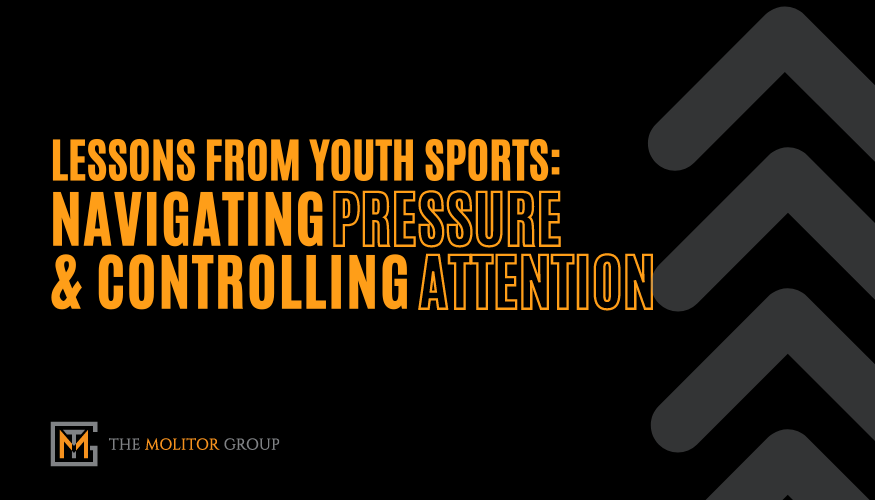Youth sports never cease to amaze me. The lessons from youth sports extend far beyond the playing field. They can teach us about navigating pressure, maintaining composure, and mastering our attention.
Let me tell you bout a recent experience involving my son EJ and 9U baseball team, on the Colonels. We were playing a home game against a formidable opponent we had defeated the previous week. The game started as it usually does, kids were hyped, walk-up music blaring, and parents were in a fun mood happy to be there and watching the boys do what they love to do… play baseball with their buddies.
Little did we know that this game would take an unprecedented turn. An hour and thirty minutes had passed and we were in the bottom of the 2nd inning (yes, you read that correctly, bottom of the 2nd inning) and there had already been 29 walks issued. The kids were pitching well, but the umpire had a strike zone would drive a college baseball coach nuts. And he refused to budge.
The parents and all the coaches were awesome, no one said a word. It was an incredible example of how everyone should act in youth sports when the game is going off the rails.
There was an uncomfortable silence, an awkwardness in the air that is hard to explain.
And then it happened.
The ump finally called a strike a little outside the zone with one problem… the ball landed on home plate.
Our coach had enough and voiced his opinion. Nothing demeaning, nothing insulting, but let the ump know that because he had called so many walks that this was probably our last at-bat and we were now chasing 13 runs.
So, the ump did what some kids do when they are playing with their buddies and things don’t go their way… he took his ball and went home. Yep, he simply walked off the field.
Lessons for Dealing with Pressure
This story is not just about youth sports; it’s about the pressures we all face in our professional and personal lives, especially in the current world we live in. Times are…different and undeniably challenging. In such circumstances, it is key to remember what truly matters.
The umpire lost sight of the fact that the night was about the nine-year-old boys on the field. Instead, he made it about himself. As a coaching leader, it is essential to understand that it is not about you, and at the same time, you must strive to be at your best regardless of the pressure you face.
Pressure is a privilege because that means you are operating at a high level in a situation that matters. The decisions you make, the behaviors you exhibit, and the way you lead all have an impact. It is critical to be in your best possible mental state.
Poor leadership decisions are not typically a result of lack of skill or knowledge but rather an inability to handle pressure in crucial moments.
Controlling Your Attention: Red Head vs Blue Head
James Kerr’s insightful leadership book, “Legacy,” explores the concept of the Red Head vs the Blue Head. The Red Head represents a negative content loop of self-judgment, rigidity, aggression, shutdown, and panic. On the other hand, the Blue Head symbolizes deep calmness, focus, control, and being in the flow state.
So, how can we transition from the inhibitions of the Red to the freedom of the Blue? The key is in controlling our attention. This is something I spend quite a bit of time working with my coaching clients. James Kerr explains it like this: “Where we direct our mind is where our thoughts will take us”. Our thoughts generate emotions; our emotions define our behavior; our behavior defines our performance.
This process, known as “state-changing,” is critical to success in every aspect of life. The key is to recognize triggers and maintain control over your attention. This will keep you present in the moment, clear-headed, focused, and on task.
Coaching Practice
- Identify two examples of when you were in a Red state of mind and two examples of when you were in a Blue state of mind.
- List how you behaved, detail conversations, thoughts, behaviors, etc.
- Identify what the outcomes were and what you could have done better. For the Red situations, how could you have reframed the situation in a more productive and resourceful way? For the Blue situations, congratulate yourself by identifying the key moments and decisions.
This was originally published as a weekly newsletter from Ed Molitor, with The Molitor Group. If you’d like to receive the weekly newsletter, scroll below to subscribe.




